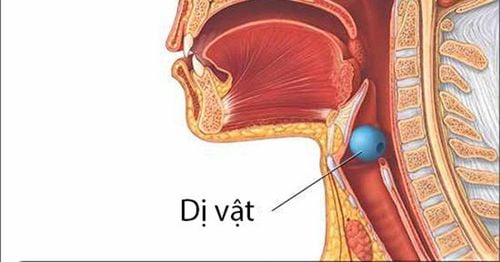This is an automatically translated article.
The article was professionally consulted by Master, Resident, Specialist I Trinh Le Hong Minh - Department of Diagnostic Imaging - Vinmec Central Park International General HospitalUltrasound of the throat is to detect abnormalities inside the nasopharynx, help doctors diagnose and treat the disease in time, and avoid dangerous complications leading to oropharyngeal cancer.
1. What is an ultrasound of the throat for?
The throat is not located too deep inside the body, but it cannot be examined with the naked eye, so doctors often ultrasound the throat to obtain images of this organ to help diagnose diseases here.When doing an ultrasound of the throat, the person performing the procedure will use a special transducer that emits sound waves that are launched into the throat area (sound waves will not cause harm), when it reaches the location to be diagnosed, it will bounce back. and transmit the captured image to the screen.
When using this method, abnormal manifestations inside the oropharynx will help doctors detect, diagnose and treat the disease promptly, avoiding dangerous complications leading to oropharyngeal cancer.
2. When should throat ultrasound to identify nasopharyngeal cancer?
All cancers have certain symptoms, and so do nasopharyngeal cancers. Go to the hospital for an ultrasound of your throat if you have the following symptoms:One-sided stuffy: If you often have a blocked nose on one side but you don't know why and you often have a thick, bloody nose, you should have an ultrasound of your neck. pharynx to screen for oropharyngeal cancer.

Swollen lymph nodes in the neck: A lymph node is a combination of cells that function like the immune system, lymph nodes are often a warning symptom that the body is having a problem. Therefore, if you have swollen lymph nodes in the neck area, the lymph nodes are hard, long-lasting, spreading uncontrollably throughout the throat, you should have an ultrasound of the nasopharynx to determine. Difficulty swallowing: Patients with nasopharyngeal cancer often have clinical manifestations of difficulty in eating. When the cancer progresses to the later stages, the patient even has difficulty even swallowing saliva. The cause of this difficulty swallowing often arises from a tumor growing inside the throat. It is this tumor that blocks the passage of food or saliva, and they should be detected early with an ultrasound of the throat. Problem Voice: If you've gone through puberty and you're showing signs of abnormal voice changes, there's a good chance you have a problem with your throat. So if you have an abnormality in your voice, you should see your doctor for an ultrasound of the throat. Ear - nose - throat not working well: In case you often experience prolonged cough, tinnitus and stuffy nose, nosebleed, you should have an ultrasound of your throat, because these symptoms can be warning signs. tell you you have throat cancer. Besides, if you often have headaches, migraines or eye sockets accompanied by signs of weakness, fatigue and shortness of breath, you should go for an ultrasound to rule out nasopharyngeal cancer.
3. Things to keep in mind before having a throat ultrasound
Throat ultrasound is one of the gentlest, less invasive procedures. However, for the best ultrasound results, you should:Abstain from alcoholic, carbonated or dyed beverages. Avoid smoking before a throat ultrasound. Avoid eating foods that are too hot or too cold; high salt or fermented foods; adopt a healthy menu Record all unusual symptoms occurring in your nasopharynx so that your doctor can diagnose more accurately.

4. Some other methods to help diagnose nasopharyngeal cancer
Diagnosis is based on symptoms suggestive of distant metastases: There are some cases with distant metastases at the beginning, the most common being bone metastases, liver metastases or lung metastases.Computed tomography and magnetic resonance imaging to evaluate tumor volume, local and regional invasion. Chest X-ray, abdominal ultrasound, and bone scintigraphy to look for distant metastases. Blood tests to evaluate the general condition and function of the liver and kidneys. Dosing of serum viral load, anti-EBV type IgA/antiEA and IgA/antiVCA antibodies.
Vinmec International General Hospital is a high-quality medical facility in Vietnam with a team of highly qualified medical professionals, well-trained, domestic and foreign, and experienced.
A system of modern and advanced medical equipment, possessing many of the best machines in the world, helping to detect many difficult and dangerous diseases in a short time, supporting the diagnosis and treatment of doctors the most effective. The hospital space is designed according to 5-star hotel standards, giving patients comfort, friendliness and peace of mind.
Please dial HOTLINE for more information or register for an appointment HERE. Download MyVinmec app to make appointments faster and to manage your bookings easily.














